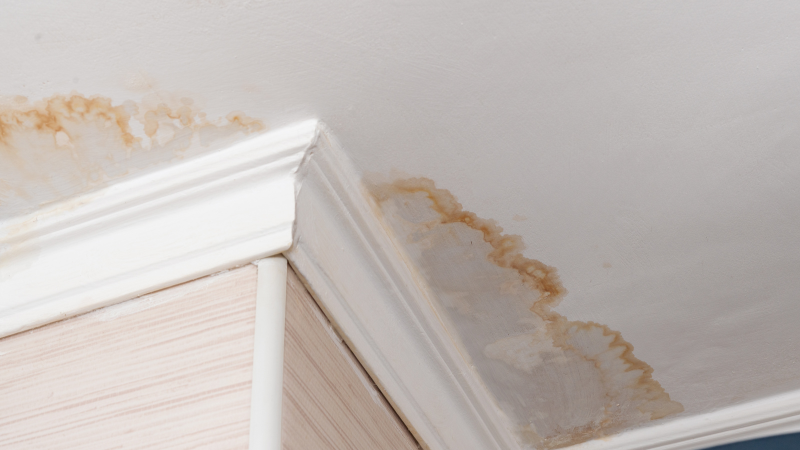Common Causes of Water Damage in a Bathroom
Common Causes of Water Damage in a Bathroom
Blog Article
How do you actually feel about How to Repair and Prevent Bathroom Water Damage?

The restroom is incredibly susceptible for moist accumulation and possible water damages as a result of the regular use of water in it. This write-up uses easy inspection strategies to assist detecting water damage threats.
The regular use of water in the washroom makes it very vulnerable for damp accumulation and also prospective water damage. By evaluating it frequently, you can reduce water related problems.
The following collection of assessments is easy to execute and ought to be done as soon as in every 3 months in order to keep your washroom healthy as well as to prevent possible water damages caused by the bath tub, the shower, pipe joints and plumbing, sinks, cupboards, and the bathroom
Do not neglect executing these evaluations and be complete while doing them. Remember that these basic evaluations can conserve you a lot of cash by supplying early signs for water damages
Sinks as well as Cabinets
Sinks and also cupboards are exposed to wetness and moisture daily and also are typically forgotten. Examine regularly under the sink as well as on the countertop above it. Repair any kind of drip in the trap as it might suggest drainpipe problems. Check out the sink, slow draining pipelines might suggest an obstructed drain. Change sink seals if they are split or loose.
Tub and also Shower
The shower as well as bath tub require unique focus and upkeep. Check the ceramic tiles and also replace if split. Make certain that there is no missing out on grout in between the floor tiles. Examine and also replace broken caulking at joints where the wall surfaces fulfill the floor or the tub. Obstructed drains as well as pipes troubles will certainly avoid the tub from drying out and may show significant problems underneath the bath tub. Consult with an expert quickly to stop architectural damages. Pay attention to discolorations or soft areas around the bathtub walls as they may suggest an interior leakage.
Plumbing
Signs for water damages are difficult to find given that most pipelines are installed inside the walls.
Pay special attention to flooring and walls moisture and stains as they may indicate an invisible plumbing problem. Examine dampness degrees in adjacent areas too.
The Commode
The commode is an at risk water joint. Examine the water lines as well as search for leaks around the toilet seat, in the hose pipe, and under the water tank. If you spot any signs of moisture on the flooring around the commode, look for leakages in the toilet rim and tank seals.
Be aware that hanging commode dish antiperspirants boosts the possibilities for blockages.
Water Damage Signs In The Bathroom To Avoid Cleanup
Musty smell
This is one of the easiest signs to catch because musty smells are so odorous. The damp, earthy, moldy smell should be a big red flag. The smell will develop when moisture gets trapped in surfaces, and begins to facilitate mold growth. Leaking pipes under cabinets, inside walls, and behind shower fixtures will cause moisture to stay trapped and not dry, which will lead to mold growth and spread. As soon as you notice any musty smells in your bathroom, have it checked for hidden water damage and cleanup signs.
Visible mold
If the smell isn’t there to give it away, sometimes you will actually see mold growth. Finding mold in your bathroom is a serious problem, because mold is very harmful to your health. By the time mold growth is visible, it also means that water damage has already occurred and been present for some time. The only way the mold problem can be resolved is to find the source of the moisture and get it stopped. To safely and adequately remove mold, you need to have professionals handle the remediation. Do not waste any time in getting mold problems addressed, fixed, and sanitized so that you can protect you and your family from the many respiratory symptoms caused by mold exposure.
Damaged floors
Bathroom floors should be able to withstand some exposure to water while still remaining in good condition. However, when excess exposure or water leaks occur, they will begin to damage even the most water-resistant flooring. If you notice any cracking, bubbling, staining, or warping on your bathroom floors, there is probably a water leak somewhere causing the distortion. If you notice areas of the floor have become softer, or even have a spongy feeling, there is probably damage to the subfloor. Subflooring is typically made up of plywood. When plywood is exposed to water or moisture, it will absorb it. Once it has become saturated, the weight of the excess water will cause the wood to swell and soften. Check the floors in your bathroom frequently to catch any of these sings before they lead to damaged subflooring.
Changes on walls
When water leaks behind walls, it will cause changes in the drywall. Peeling plaster, blistering paint, and soggy wallpaper are all good indicators that excess water is building up behind the wall. Water leaking behind drywall will cause it to swell and be soft to the tough. If you start to notice gaps along the trim of your walls, or where tile meets the wall, it could also be a strong indicator that there is a leak behind the wall. Any changes, distortion, or damage on the walls should be evaluated as soon as you notice it to prevent further water damage and cleanup.

I ran across that entry on Preventing Water Damage in the Bathroom while doing a lookup on the internet. Please set aside a second to promote this write-up if you enjoyed reading it. Thanks for your time. Visit us again soon.
Services Report this page